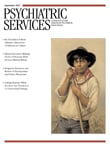Letter
Concerns About Study Design
To the Editor: An article in the May issue of Psychiatric Services by Perry and colleagues ( 1 ) compared public attitudes toward depression in childhood and adulthood. Although the authors made an interesting comparison and they acknowledged several design flaws in their study, they did not address certain weaknesses and underplayed many that they did mention.
As the authors note, the vignettes used in the study were not identical. The most salient difference was that only the vignette describing the child mentioned suicidal ideation. The authors referred to the vignettes as "equivalent but not identical," but they did not give a clear explanation of how equivalency was assessed. They noted that this may have had only minor impact on the results because the differences in "danger to self" ratings were small and the differences in "danger to others" ratings were larger. However, it is insufficient to assume that the differences between the vignettes can be dismissed on the basis of outcomes. For the two vignettes, 79% of respondents rated the child as "likely to be violent toward self," and 74% of respondents rated the adult in this way. In both cases the rating was high. The ratings of danger to others were much lower, 40% and 30%, respectively.
Given highly publicized recent events, such as school shooters killing others and themselves, it is possible that the suicidal ideation mentioned in the child vignette caused the difference in ratings of danger to others. If the adult vignette had been the only one to mention suicidal ideation and if the study had been conducted in the early 1990s when post office and workplace shootings, rather than school shootings, were highly publicized, the results may have been reversed.
This brings us to our next point. The adult vignette was used for data collection in 1996, and the child vignette was used in 2002—six years later. The authors suggest that this had little impact on their findings. It is well known in social sciences that a cohort effect can occur when data are collected at distinctly separate times. In addition, because the vignettes were used at two different times, there was no randomization in the populations given the vignettes. The authors did not report whether there was a significant difference between the participant groups. Data provided were limited to gender, age, and race. Of particular concern in a study such as this one are education level, knowledge of depression, and socioeconomic status. And finally, there was a dramatic surge in school killings between 1996 and 2002, and many books, news magazines, and other media outlets hypothesized that mental illness plays a role in children's violent acts. There is thus reason to believe that public perceptions of children might have changed.
Additional problems with the study include not providing information about age—or age range—for the adult and the child in the vignettes. Respondents' varied perceptions of their ages would have made a substantial difference in their interpretation of the vignette. Binary coding of data may not have appropriately captured participants' views, particularly the views of those who were ambivalent about the topic. Also, given the large sample, reporting analyses of power, in addition to p values, would have been appropriate.
1. Perry BL, Pescosolido BA, Martin JK, et al: Comparison of public attributions, attitudes, and stigma in regard to depression among children and adults. Psychiatric Services 58:632–635, 2007Google Scholar



